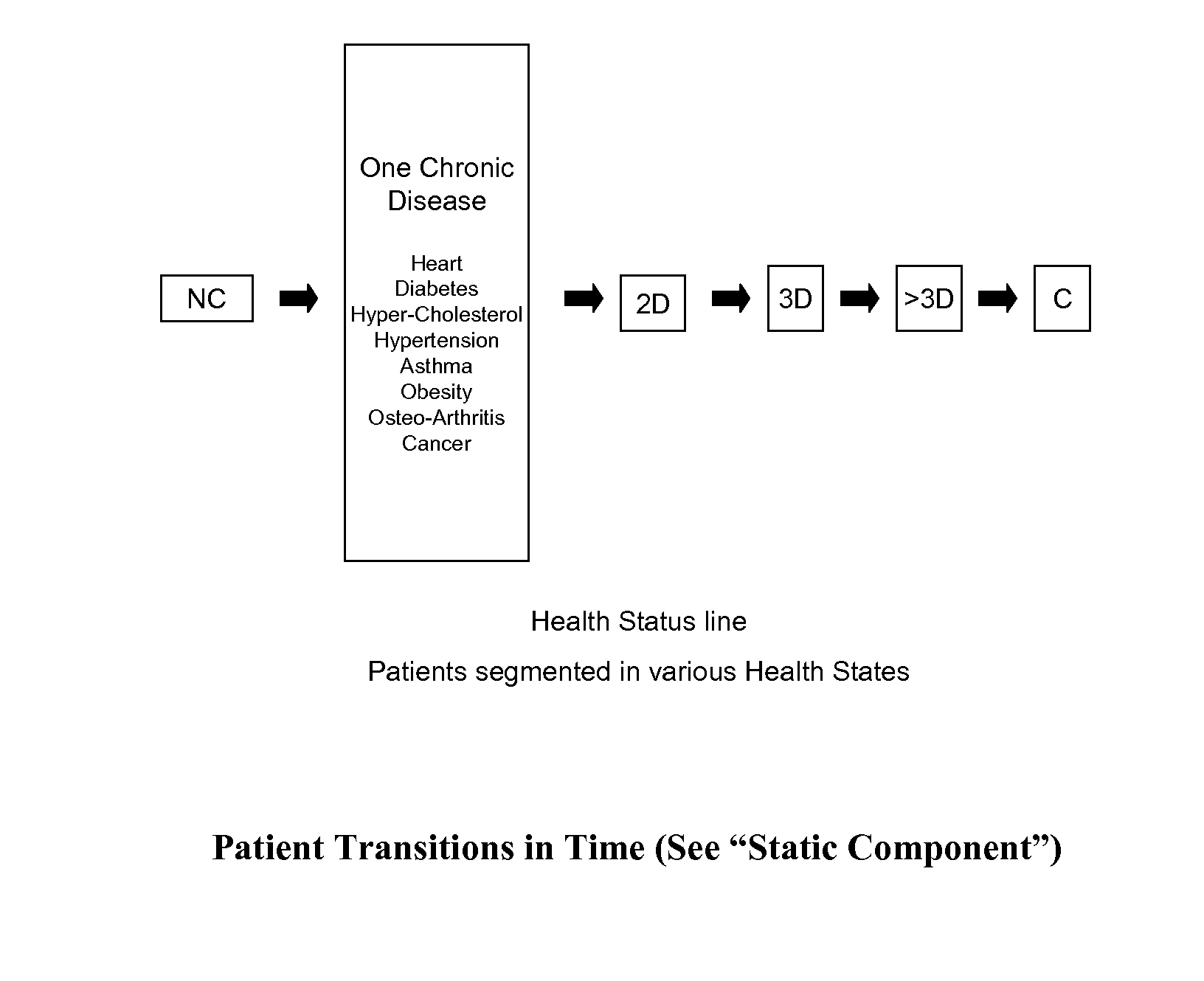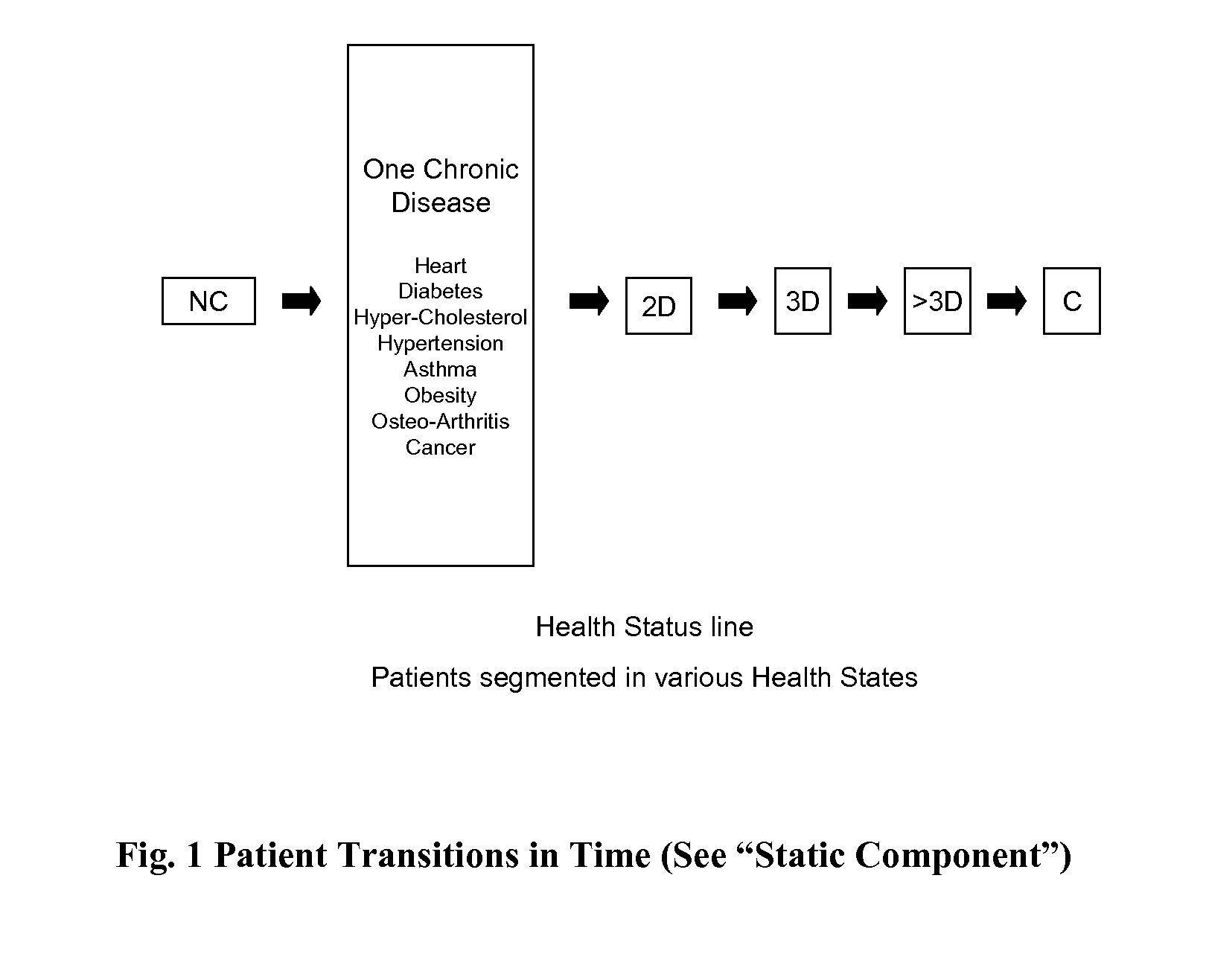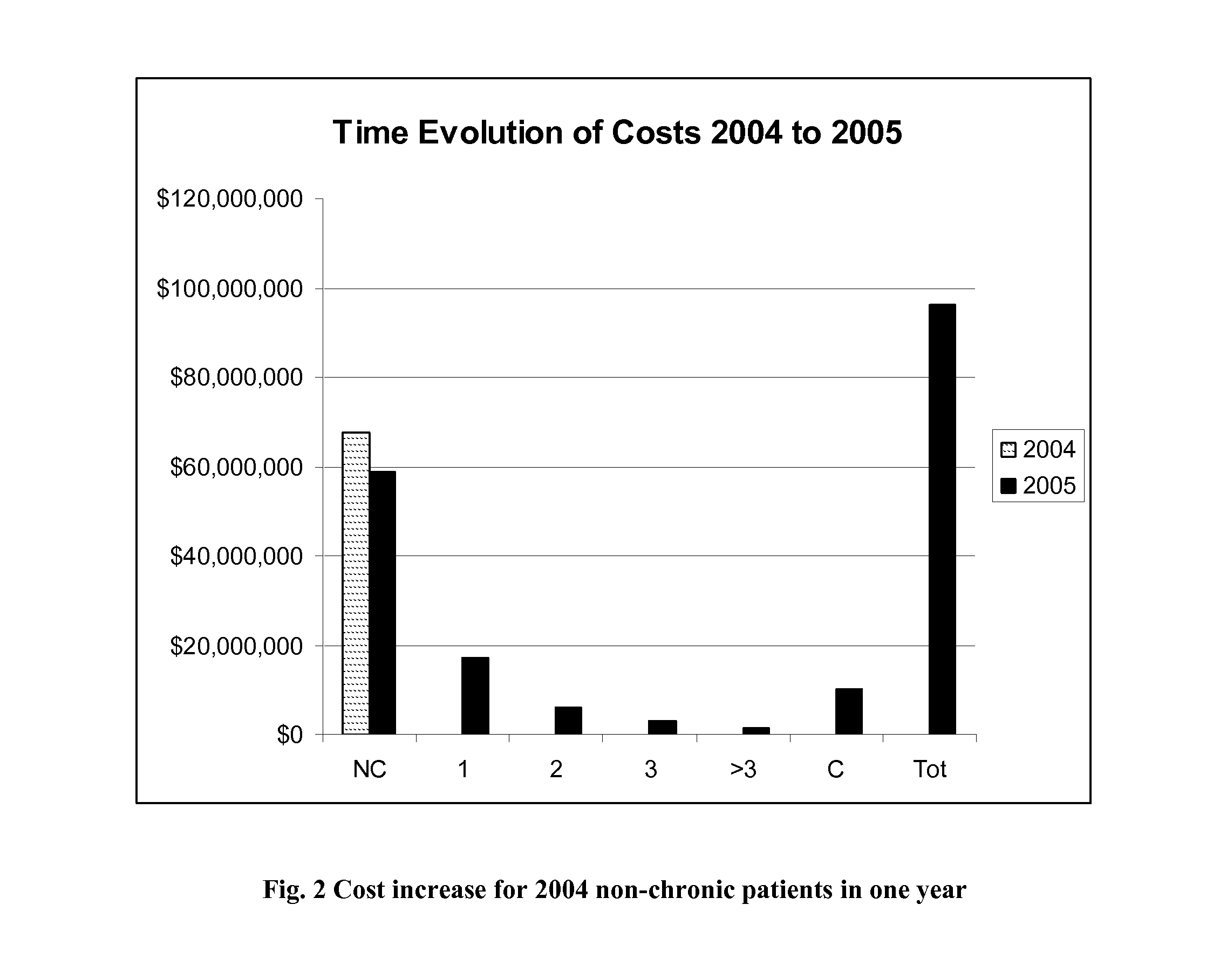Chronic Population Based Cost Model to Compare Effectiveness of Preventive Care Programs
a cost model and population technology, applied in the field of chronic population based cost model to compare the effectiveness of preventive care programs, can solve the problems of distorted medical needs of populations beyond the limits of statistical extrapolation, inability of current healthcare cost models and inability to accurately predict the cost of next year. , to achieve the effect of accurate cost estimates, increased future costs, and worsening with time and cos
- Summary
- Abstract
- Description
- Claims
- Application Information
AI Technical Summary
Benefits of technology
Problems solved by technology
Method used
Image
Examples
Embodiment Construction
” as Static Component. The population is divided into various health segments, Non Chronic, 1 Disease, 2 Disease etc. and arranged from left to right. This figure then describes the typical temporal development of a population, from left to right. For example, non-chronic patients, over a period of time can develop one or more chronic diseases, and move to the right in the figure, to any of the health segments. Because there is no cure for chronic disease, the re is never a movement from right to left in the figure. Also, transitions to “C” (cancer) are allowed from any of the states defined in FIG. 1 above.
[0031]As stated in the text, cancer costs are so large that it belongs in a special category.
[0032]FIG. 2. Cost increase for 2004 non-chronic patients in one year
Explanatory note to FIG. 2:
[0033]In this example, about 55,000 non chronic patients in 2004 incurred costs of about $67.5 million. During the following year, many non chronic patients remained in the same health segment ...
PUM
 Login to View More
Login to View More Abstract
Description
Claims
Application Information
 Login to View More
Login to View More - R&D
- Intellectual Property
- Life Sciences
- Materials
- Tech Scout
- Unparalleled Data Quality
- Higher Quality Content
- 60% Fewer Hallucinations
Browse by: Latest US Patents, China's latest patents, Technical Efficacy Thesaurus, Application Domain, Technology Topic, Popular Technical Reports.
© 2025 PatSnap. All rights reserved.Legal|Privacy policy|Modern Slavery Act Transparency Statement|Sitemap|About US| Contact US: help@patsnap.com



